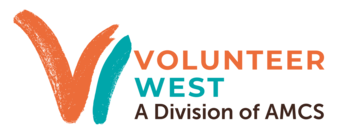Writing inclusive Position Descriptions….
…is not as hard as you might think!
With Volunteer West’s focus on inclusive volunteering experiences, one of the things that we emphasise in the PD Pivot service is the importance of inclusivity when it comes to recruiting volunteers.
When we are collaborating with a Volunteer Manager to write a brilliant Position Description (PD), one of the questions we ask is: “could this volunteer role be made inclusive for volunteers with a disability?”
Often, the first reaction from the volunteer manager is one of mild panic. We can almost hear their thoughts: “Oh my gosh, I think there’s steps to the entrance! Our old building doesn’t have ramps! Do we have accessible toilets? What if the volunteer gets hurt? Can I be sued? I think our doorways are too small for a wheelchair! We’ve never had disabled volunteers before!”
Can you see the common theme that links all these thoughts?
These are all being listed as dealbreakers before a single person has even applied for the role. The truth is that Volunteer Managers provide flexibility and accommodations all the time – for people who can’t volunteer on Tuesdays or need to finish by 3pm to pick up their children from school. The ability to discuss arrangements and be flexible is a skill that volunteer managers already possess, and premature worries about disability are undermining the professional skills that you already have.
Let’s bring the focus away from hypothetical problems and instead focus on what practical steps you can take to bring inclusivity into your volunteer program.
If I can give you just one overarching piece of advice, it would be to TRUST.
Trust that the first step can be as simple as including the following statement in your PD: “This role can be made suitable for someone with a disability – we are happy to talk with you about your needs”. And then, when you are interviewing potential volunteers, asking them “Are there any accommodations we can make for you to be able to do this role successfully?”
Trust that a person with a disability knows their own physical and mental strengths and limitations. They know their abilities best, and if they’re applying for the role then it’s because they clearly believe that it’s within their abilities. Trust that if they need help or any changes to their duties, they will tell you.
Trust that applicants with a disability will make an informed decision about applying for a role based on the details that you provide in your well-crafted PD. (Our PD Pivot service is here to help you with this!) If you have noted that driving is an essential part of the role, then a non-driver knows not to apply.
Trust that your organisation can be flexible and accommodating to all volunteers. Don’t say ‘no’ to disabled volunteers out of a sense of institutional fear but lead the charge that makes volunteers with a disability a valued and respected part of your volunteer workforce.
Trust yourself, as a volunteer manager. You’ve seen a lot of changes during your tenure (hey, you survived 2020), and although new ways of thinking can be a bit of a challenge, you’ve done it before, and you can do it again.
Trust that you can have an honest and open conversation with someone about their disability. People with a disability know that they have a disability – they would rather talk openly and honestly about their needs than be overlooked because it’s all a bit awkward to talk about.
If you’d like to read more about working with volunteers with a disability, we recommend the following resources:
Author: Avalon Carr
Project Officer at Volunteer West
Avalon has created and is running the PD Pivot Service, which has thus far helped over 40 organisations to create inclusive, specific and diverse Positions Descriptions.
If you’re ready to work with us in creating Position Descriptions that are diverse, inclusive and specific, please visit: PD Pivot — Volunteer West
This is the first in a two-part blog series about inclusivity in volunteer roles. You can read part-two which focusses on position description for people with lower levels of English here.

